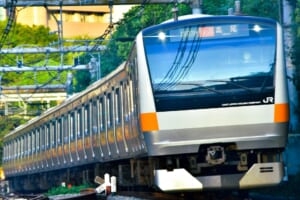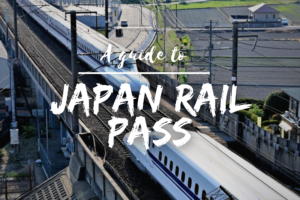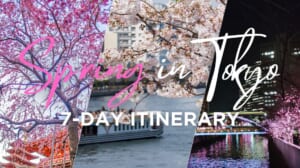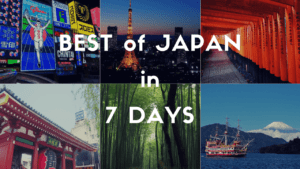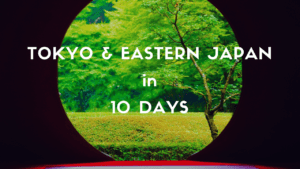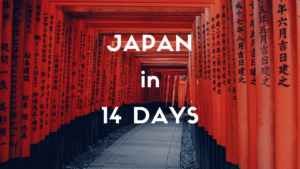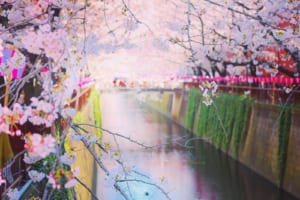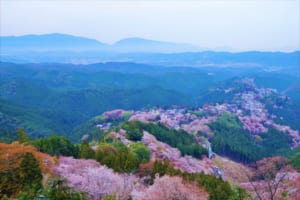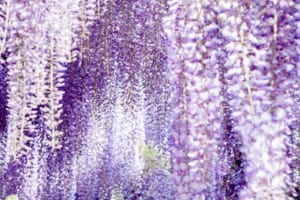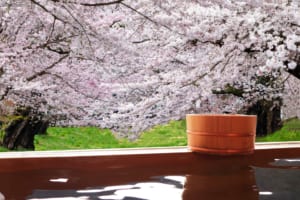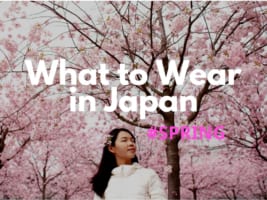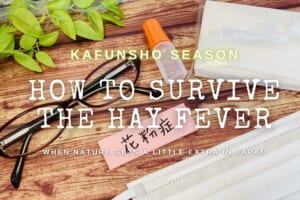14 day Spring Itinerary in Japan
Discovering Japan Through Sakura Season
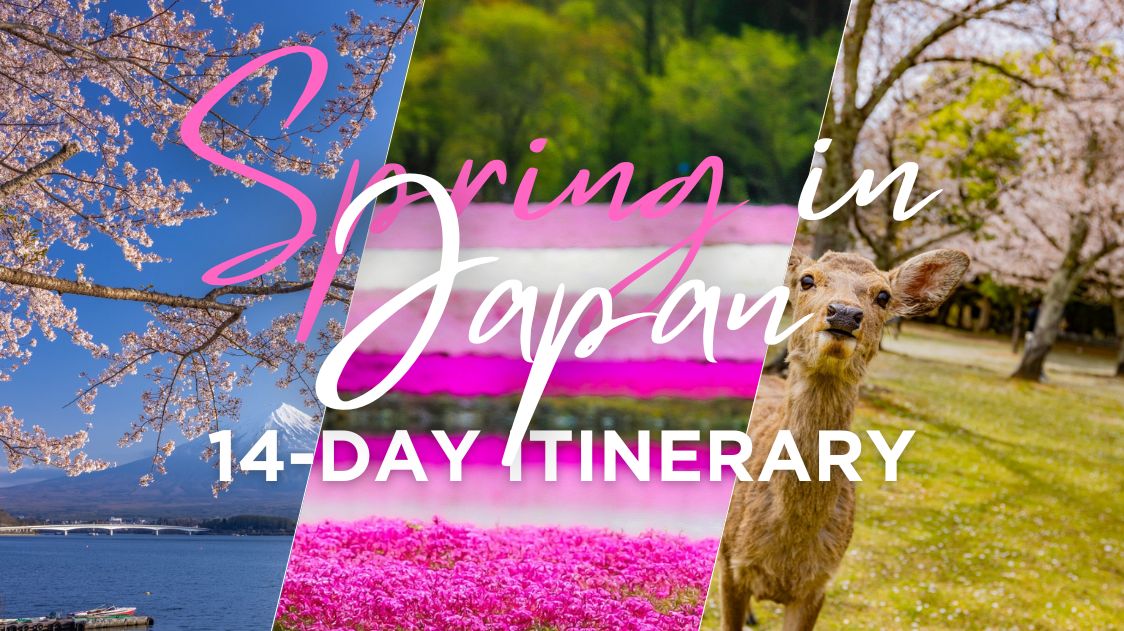
Spring is the busiest season in Japan, with good reason. The landscape becomes covered with the delicate pink hues of cherry blossoms reaching equally the bustling streets of its largest metropolitan areas and the peaceful parks and gardens, as well as the most historical places. This Spring itinerary covers in 14 days all the indispensable iconic landmarks taking into account the best places to admire the natural beauty of Sakura, offering an immersive experience into Japan’s rich culture, history, and traditions.
Without further ado, let’s discover the best of Japan’s springtime allure!
▽Here are some helpful passes for your journey in Japan!▽
▶ Book your Tokyo Wide Pass ticket here!
▶ Book your Hankyu Tourist Pass here!
▶ Book your Kansai Thru Pass (2 or 3 Days) here!
▶ Book your JR West Kansai Pass (1, 2, 3 or 4 Days) here!
▽Check our guides to Japan’s transportation passes!▽
*Please note that this article contains affiliate links.
Days 1-2: Tokyo
▽Check some of your helpful guides for a smooth start to your trip!▽
▶How to travel to Tokyo from Narita Airport or Haneda Airport
▶Luggage Delivery from Narita and Haneda Airport to Your Hotel
▶Pocket WiFi rentals in Narita Airport or Haneda Airport
Day 1: Ueno and Asakusa
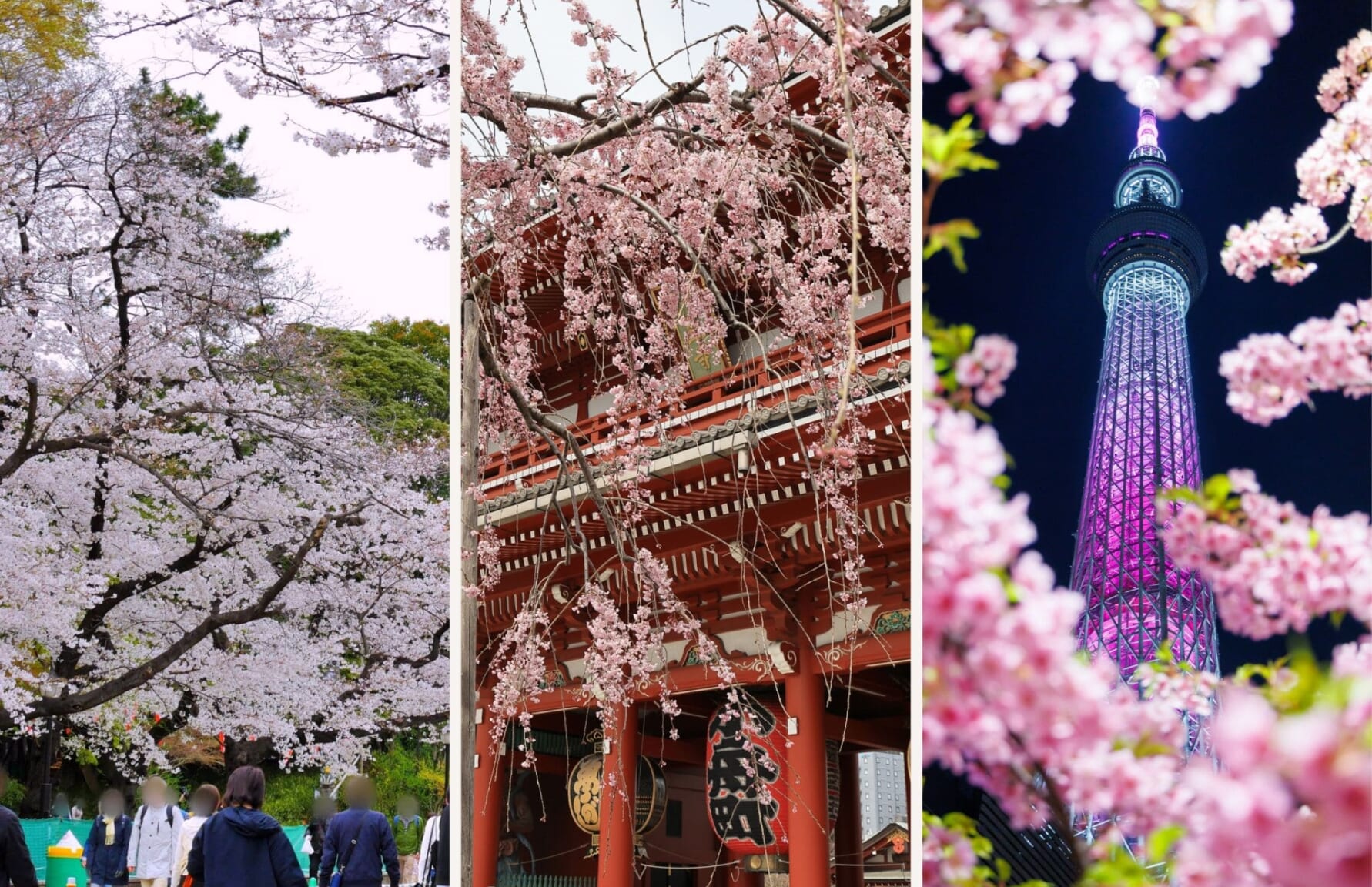 Ideally, you should arrive early enough to make the best of your first day. You may also want to stay busy as much as possible throughout the day so make sure you’re tired enough at night, that way you’ll hopefully be able to fend off the dreaded jet lag! Ok then, leave your belongings at your accommodation and head to Ueno.
Ideally, you should arrive early enough to make the best of your first day. You may also want to stay busy as much as possible throughout the day so make sure you’re tired enough at night, that way you’ll hopefully be able to fend off the dreaded jet lag! Ok then, leave your belongings at your accommodation and head to Ueno.
Ueno Park (上野公園) is especially beautiful during cherry blossom season. This is why it’s a popular spot for “hanami” (flower viewing) due to the sheer number of sakura trees blooming in spring. Take a stroll enjoying the sights and all the cultural landmarks within the park. For lunch, Ameyoko (アメ横) is a good option!
In the Afternoon, make your way to Asakusa (浅草), home to the iconic Sensoji (浅草寺), the oldest Buddhist Temple in Tokyo. Stroll down Nakamise Shopping Street (仲見世通り), lined with stalls selling traditional snacks and souvenirs, and explore the surrounding neighborhood areas.
Towards the evening. cap off the day with a visit to Tokyo Skytree (東京スカイツリー), the tallest structure in Japan. The observation decks offer breathtaking views of the city, and there are also cafes and restaurants where you can have dinner for your convenience.
Day 2: Shinjuku and Shibuya
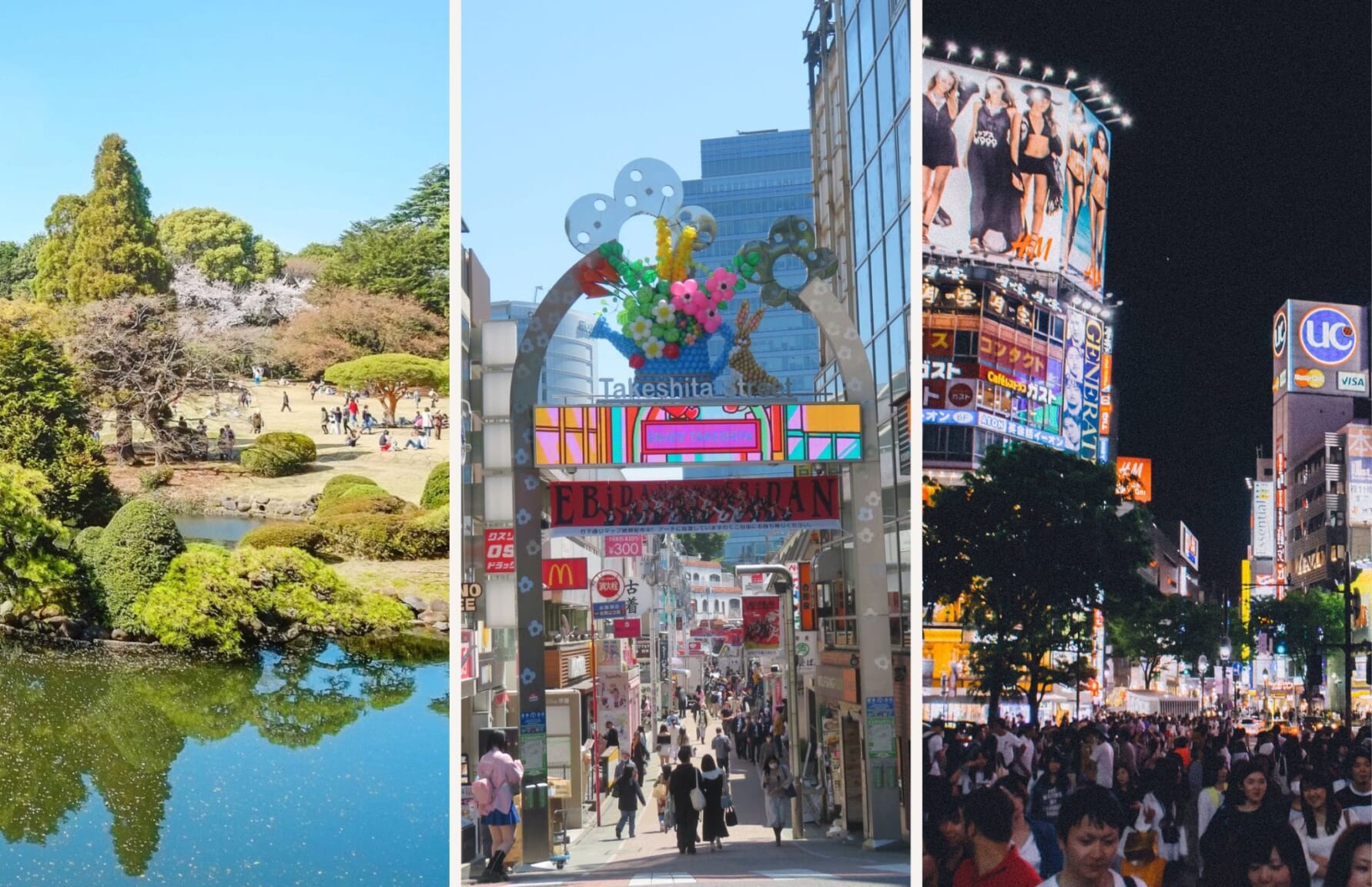 For your next day, head to Shinjuku Gyoen (新宿御苑), a gorgeous oasis that features traditional Japanese, English, and French garden designs, with a wide variety of cherry trees. You can have a picnic here for lunch or get something around Shinjuku Station.
For your next day, head to Shinjuku Gyoen (新宿御苑), a gorgeous oasis that features traditional Japanese, English, and French garden designs, with a wide variety of cherry trees. You can have a picnic here for lunch or get something around Shinjuku Station.
In the afternoon, wander through the trendy streets of Harajuku (原宿) and Omotesando (表参道), known for their unique fashion, art, and culture. Make sure you visit Meiji Jingu (明治神宮), the most important Shinto shrine in Tokyo dedicated to Emperor Meiji and Empress Shoken, for a nice interlude in a peaceful forested area. Come evening, and it’s time to experience the energy of Shibuya (渋谷), famous for its bustling crossing. Explore the area’s numerous shops, cafes, and restaurants.
▽More ideas around Tokyo in Spring▽
▶Best Places to See Cherry Blossoms in Tokyo
▶Tokyo Sakura Guide: Best Hanami Spots in Tokyo
▶Best Places to See Night Cherry Blossoms in Tokyo
Days 3-4: Kanagawa (Yokohama & Hakone)
Day 3: Day Trip to Yokohama
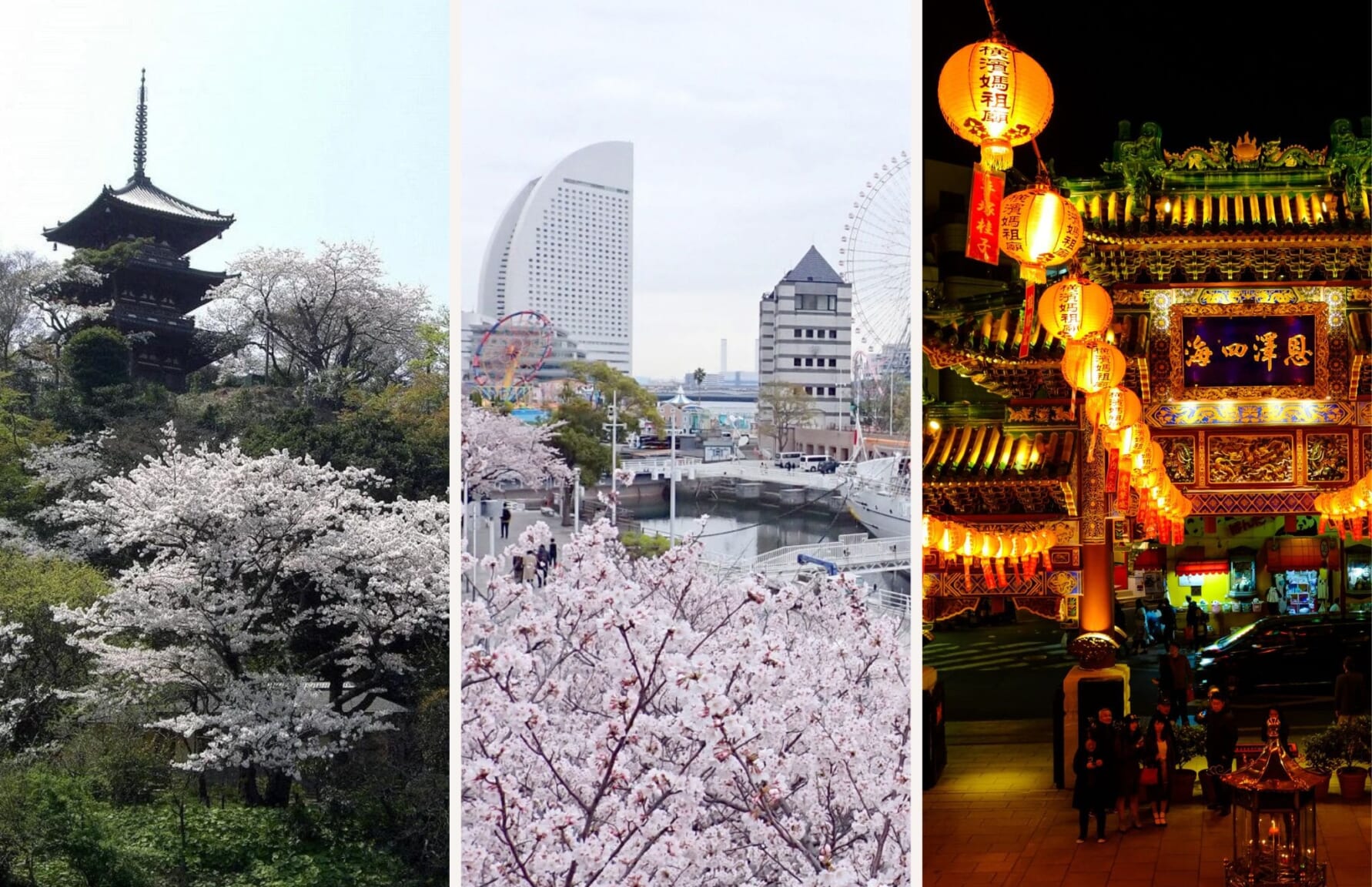 Yokohama (横浜), Japan’s second-largest city and just around 1 hour from central Tokyo, offers waterfront attractions and beautiful gardens. Start your visit in Sankeien Garden (三渓園), a spacious Japanese-style garden featuring historic buildings from across Japan set against a backdrop of seasonal flowers, including cherry blossoms.
Yokohama (横浜), Japan’s second-largest city and just around 1 hour from central Tokyo, offers waterfront attractions and beautiful gardens. Start your visit in Sankeien Garden (三渓園), a spacious Japanese-style garden featuring historic buildings from across Japan set against a backdrop of seasonal flowers, including cherry blossoms.
For lunchtime, go to Minato Mirai (みなとみらい), a modern seaside area with shopping, amusement parks, and museums. The area’s futuristic architecture and ocean views make for a pleasant afternoon stroll with cherry blossom-lined streets. After sunset, go to Chinatown (中華街), the largest one in Japan, and spend a fun evening exploring the shops and streets lined with the most authentic Chinese cuisine.
▽More ideas of things to do in Yokohama▽
▶Best Places to See Cherry Blossoms in Yokohama
▶Best Things to Do in Yokohama
Day 4: Day Trip Hakone
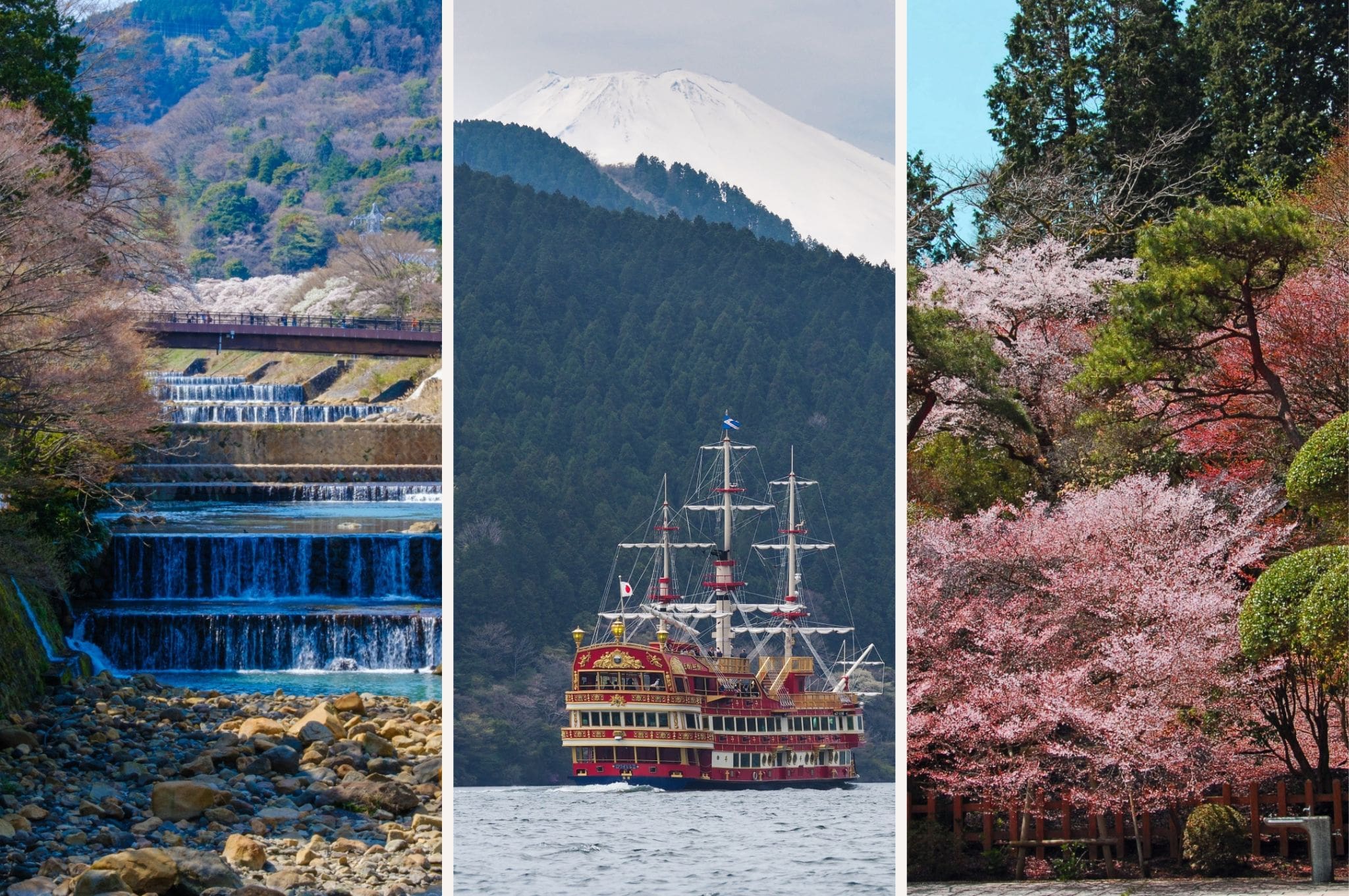 Hakone (箱根) is one of the most popular destinations in Tokyo for its hot springs, natural beauty, and views of Mt. Fuji. It’s advisable to leave Tokyo as soon as possible in the morning, as most attractions close relatively early. Also, once you get there unless your accommodation is really close to the station, it’s probably better to leave your belongings in the station lockers and simply check-in in the evening.
Hakone (箱根) is one of the most popular destinations in Tokyo for its hot springs, natural beauty, and views of Mt. Fuji. It’s advisable to leave Tokyo as soon as possible in the morning, as most attractions close relatively early. Also, once you get there unless your accommodation is really close to the station, it’s probably better to leave your belongings in the station lockers and simply check-in in the evening.
Take the Hakone Ropeway from Sounzan Station for panoramic views of the surrounding mountains and Lake Ashi (芦ノ湖). There’s a cafeteria in Togendai Station where you can stop for lunch.
Once there, it’s a good opportunity to get on the Pirate Ship to the other side of the lake in Motohakone Port. From there, go to Onshi-Hakone Park (箱根公園) for its stunning cherry blossoms and views of Lake Ashi. The park’s strategic location offers picturesque views of Mt. Fuji on clear days. If your accommodation in Hakone includes an Onsen, then it’s the perfect way to relax at the end of the day.
Days 5-6: Mt. Fuji Area
Day 5:
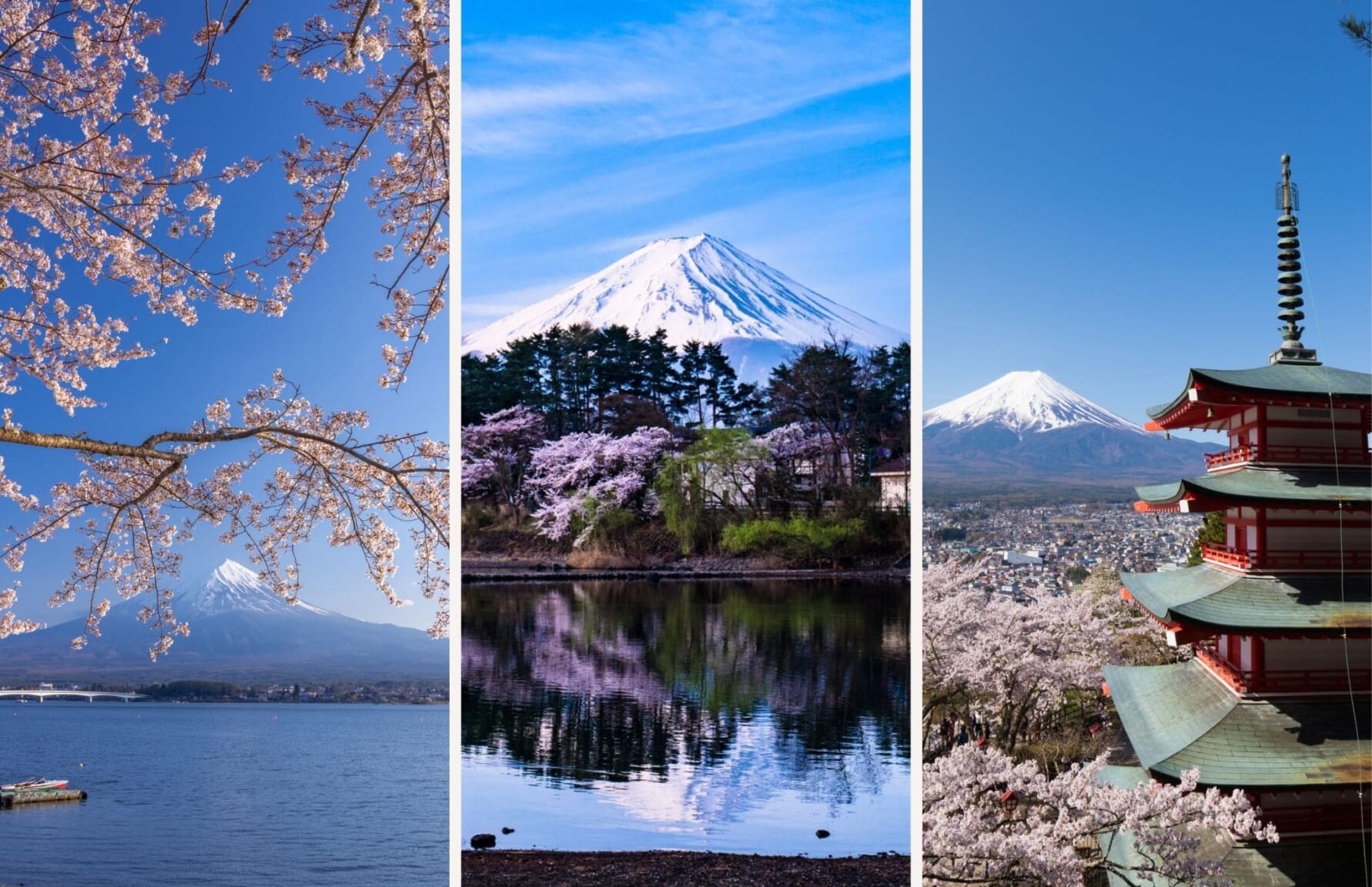 Depart Hakone in the early morning towards Kawaguchiko and start at the Northern Shores of Lake Kawaguchiko (河口湖) for breathtaking views of Mt. Fuji framed by cherry blossoms. The area offers numerous photo opportunities and plenty of beautiful sights surrounding the lake, as well as local attractions such as the Kawaguchiko Music Forest Museum, a European-themed park with music boxes and gardens. Have lunch in one of the local restaurants.
Depart Hakone in the early morning towards Kawaguchiko and start at the Northern Shores of Lake Kawaguchiko (河口湖) for breathtaking views of Mt. Fuji framed by cherry blossoms. The area offers numerous photo opportunities and plenty of beautiful sights surrounding the lake, as well as local attractions such as the Kawaguchiko Music Forest Museum, a European-themed park with music boxes and gardens. Have lunch in one of the local restaurants.
After lunch, head to the Arakura Fuji Sengen Shrine, where the famous Chureito Pagoda (忠霊塔) is located. On a clear day, you will be greeted with one of the most iconic sights of Mt. Fuji, towering above cherry trees and framed with the beautiful pagoda on the side. It’s also a wonderful spot to see the sunset.
Day 6:
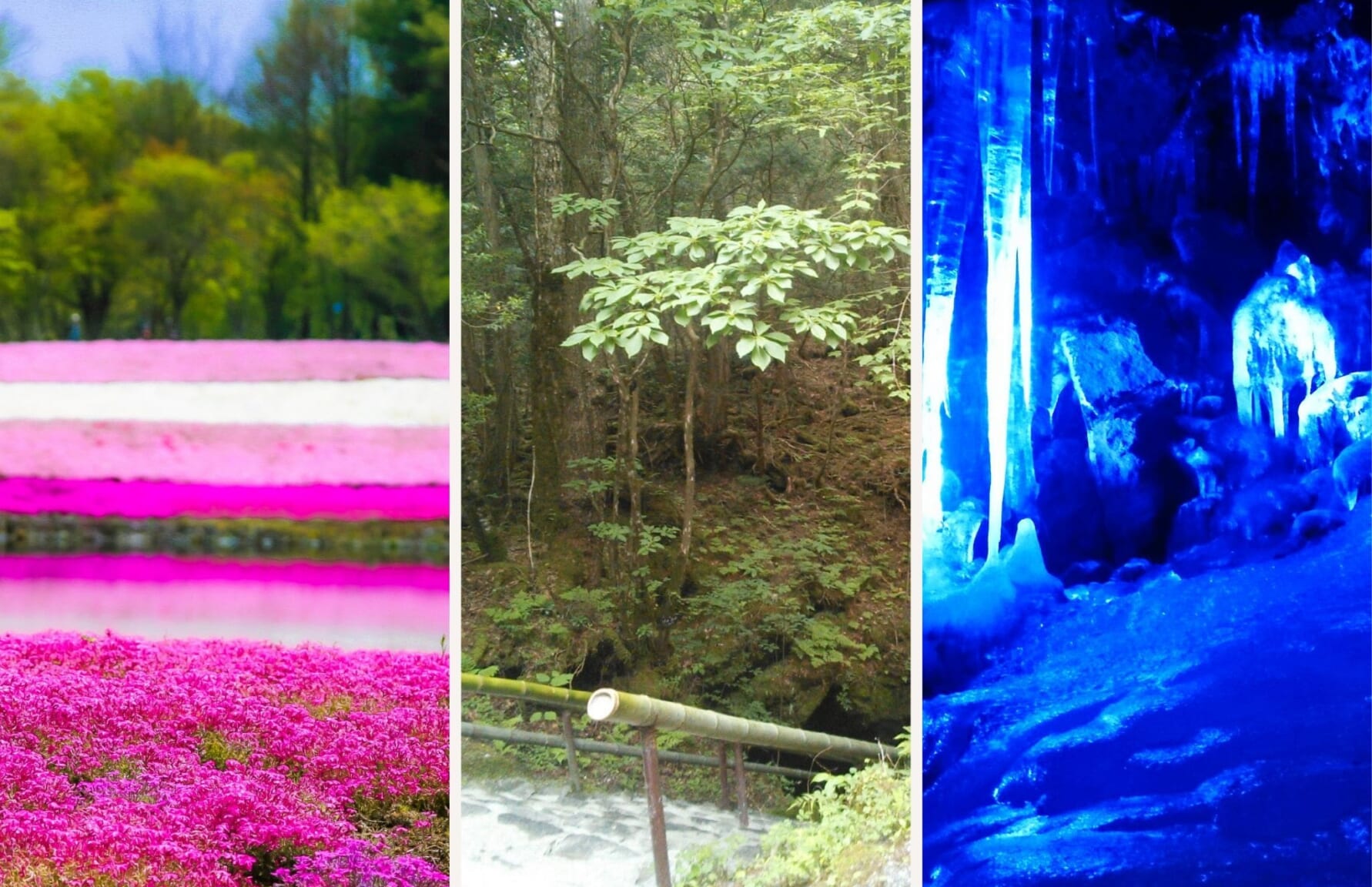 Depending on your timing, your second day in the Fuji area could be a good opportunity to attend the Fuji Shibazakura Festival (富士芝桜まつり) to see the vibrant pink moss phlox with Mt. Fuji in the background. The colorful carpet of flowers against the backdrop of the mountain is a sight to behold. There are lots of food stalls there during the festival so it’s perfect for lunch!
Depending on your timing, your second day in the Fuji area could be a good opportunity to attend the Fuji Shibazakura Festival (富士芝桜まつり) to see the vibrant pink moss phlox with Mt. Fuji in the background. The colorful carpet of flowers against the backdrop of the mountain is a sight to behold. There are lots of food stalls there during the festival so it’s perfect for lunch!
After lunch, visit the Fugaku Wind Cave (富岳風穴) and Narusawa Ice Cave (鳴沢氷穴), formed by lava flows from Mt. Fuji. It’s an interesting natural wonder that offers a glimpse into the volcanic activity that shaped the region. After you’re done, go to Shin-Fuji Station to ride the Shinkansen to Kyoto (about 2 hours and 30 minutes long).
Days 7-8: Kyoto
Day 7:
 Kyoto (京都), the heart of traditional Japan and famous for its temples and shrines, becomes an out-of-this-world sight amid the cherry blossoms. Start your day walking the Philosopher’s Path (哲学の道), a stone path lined with cherry trees, starting from Ginkakuji (銀閣寺). The path offers a peaceful setting for contemplation and enjoyment of the blossoms.
Kyoto (京都), the heart of traditional Japan and famous for its temples and shrines, becomes an out-of-this-world sight amid the cherry blossoms. Start your day walking the Philosopher’s Path (哲学の道), a stone path lined with cherry trees, starting from Ginkakuji (銀閣寺). The path offers a peaceful setting for contemplation and enjoyment of the blossoms.
After lunchtime, visit Heian Shrine (平安神宮), known for its large torii gate and garden with weeping cherry trees. Then, explore Nanzenji (南禅寺), a Zen temple with a striking aqueduct and beautiful gardens. Then, spend the evening strolling through Gion (祇園), Kyoto’s geisha district. The area’s traditional wooden machiya houses and exclusive ochaya (teahouses) provide a glimpse into old Kyoto, where you can enjoy dinner in a traditional restaurant.
Day 8:
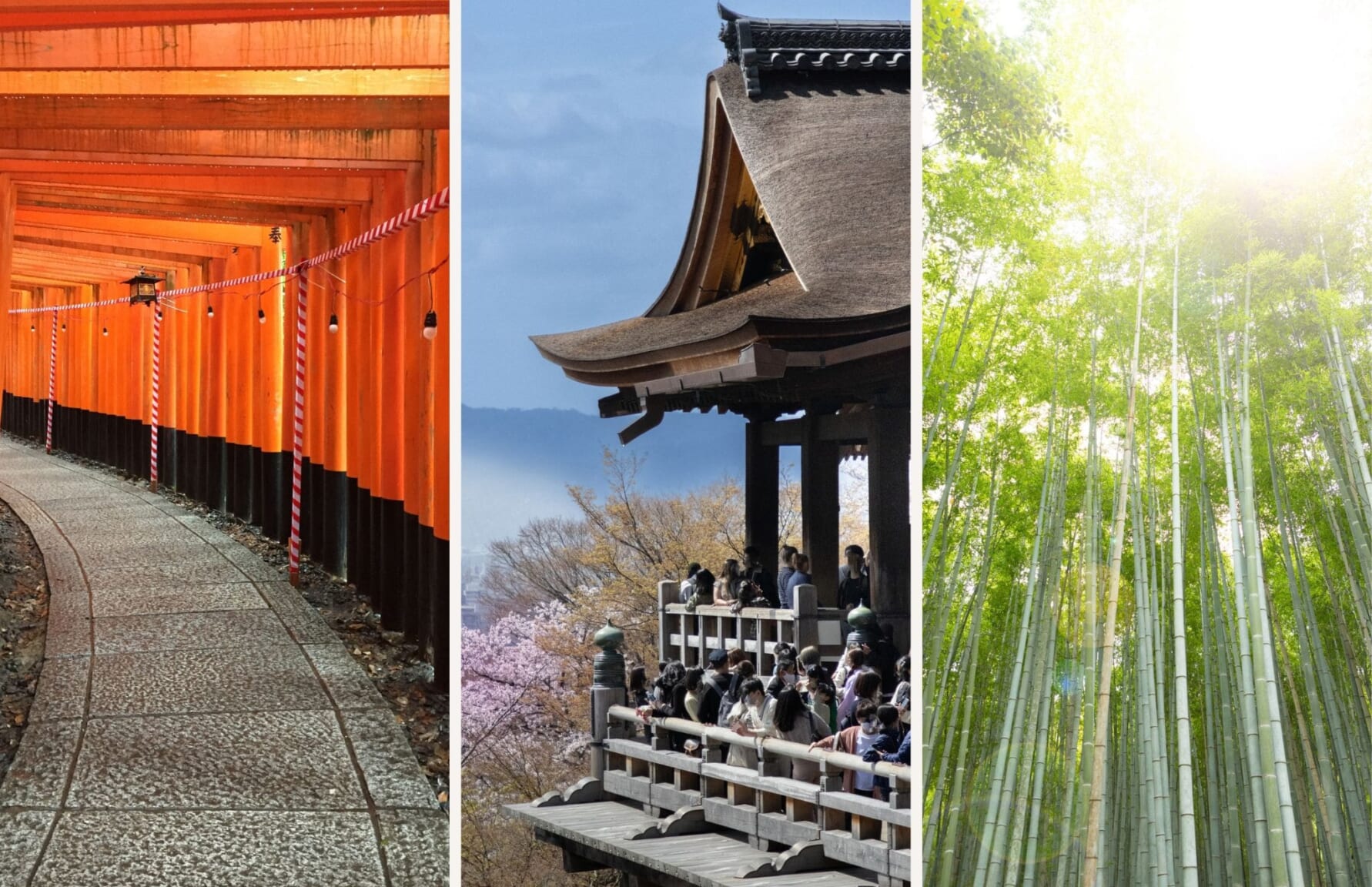 For your second day in Kyoto, try to start early and head to Fushimi Inari Taisha (伏見稲荷大社), hopefully before the crowds begin to fill their famous red torii gates. Continue to Kiyomizudera (清水寺), known for its wooden stage that offers panoramic views of Kyoto, especially beautiful during cherry blossom season. Wander through the historic streets of Higashiyama, lined with shops and traditional tea houses. Have lunch around the area.
For your second day in Kyoto, try to start early and head to Fushimi Inari Taisha (伏見稲荷大社), hopefully before the crowds begin to fill their famous red torii gates. Continue to Kiyomizudera (清水寺), known for its wooden stage that offers panoramic views of Kyoto, especially beautiful during cherry blossom season. Wander through the historic streets of Higashiyama, lined with shops and traditional tea houses. Have lunch around the area.
In the afternoon, head to Arashiyama (嵐山) to visit the famous Bamboo Grove and enjoy cherry blossoms around the area. The Togetsukyo Bridge offers picturesque views of the surrounding mountains and river. For the evening, return to Gion or explore Pontocho Alley, known for its fun vibe filled with bars and dining establishments. The restaurants with terraces facing the Kamo River are very popular in this area.
▽More ideas of things to do in Kyoto▽
▶Best Things to Do in Kyoto in Spring
▶Best Places to See Cherry Blossoms in Kyoto
▶Best Things to Do in Kyoto in March
▶Best Things to Do in Kyoto in April
Day 9: Day Trip to Nara
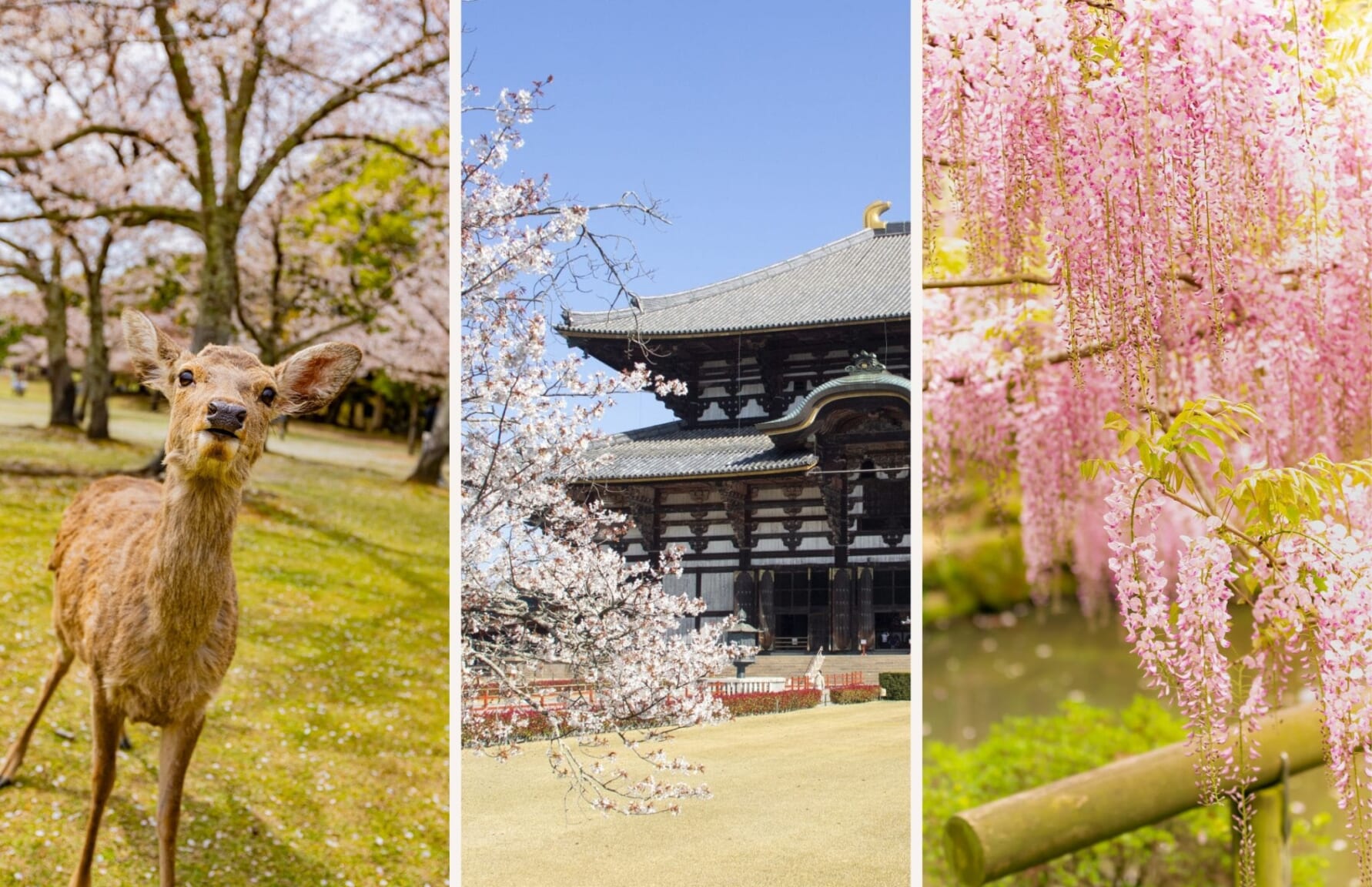 Nara (奈良), less than 1h away from Kyoto, used to be Japan’s first permanent capital and is famous for its historic temples, shrines, and particularly for their freely roaming deer. Start your day in Nara Park, famous for its tame deer and cherry blossoms. Explore Todaiji (東大寺), a Buddhist Temple famous for housing a giant Buddha statue, and wander through the park’s various gardens and ponds adorned with cherry trees.
Nara (奈良), less than 1h away from Kyoto, used to be Japan’s first permanent capital and is famous for its historic temples, shrines, and particularly for their freely roaming deer. Start your day in Nara Park, famous for its tame deer and cherry blossoms. Explore Todaiji (東大寺), a Buddhist Temple famous for housing a giant Buddha statue, and wander through the park’s various gardens and ponds adorned with cherry trees.
After lunch, visit Kasuga Taisha (春日大社), a Shrine known for its stone lanterns and wisteria flowers. Then, explore the Nara National Museum for a deeper understanding of Japanese Buddhist art.
▽More ideas of things to do in Nara▽
▶1 Day Itinerary in Nara: Day Trip to Nara from Kyoto
▶Best Temples and Shrines in Nara
Days 10-11: Osaka
Day 10:
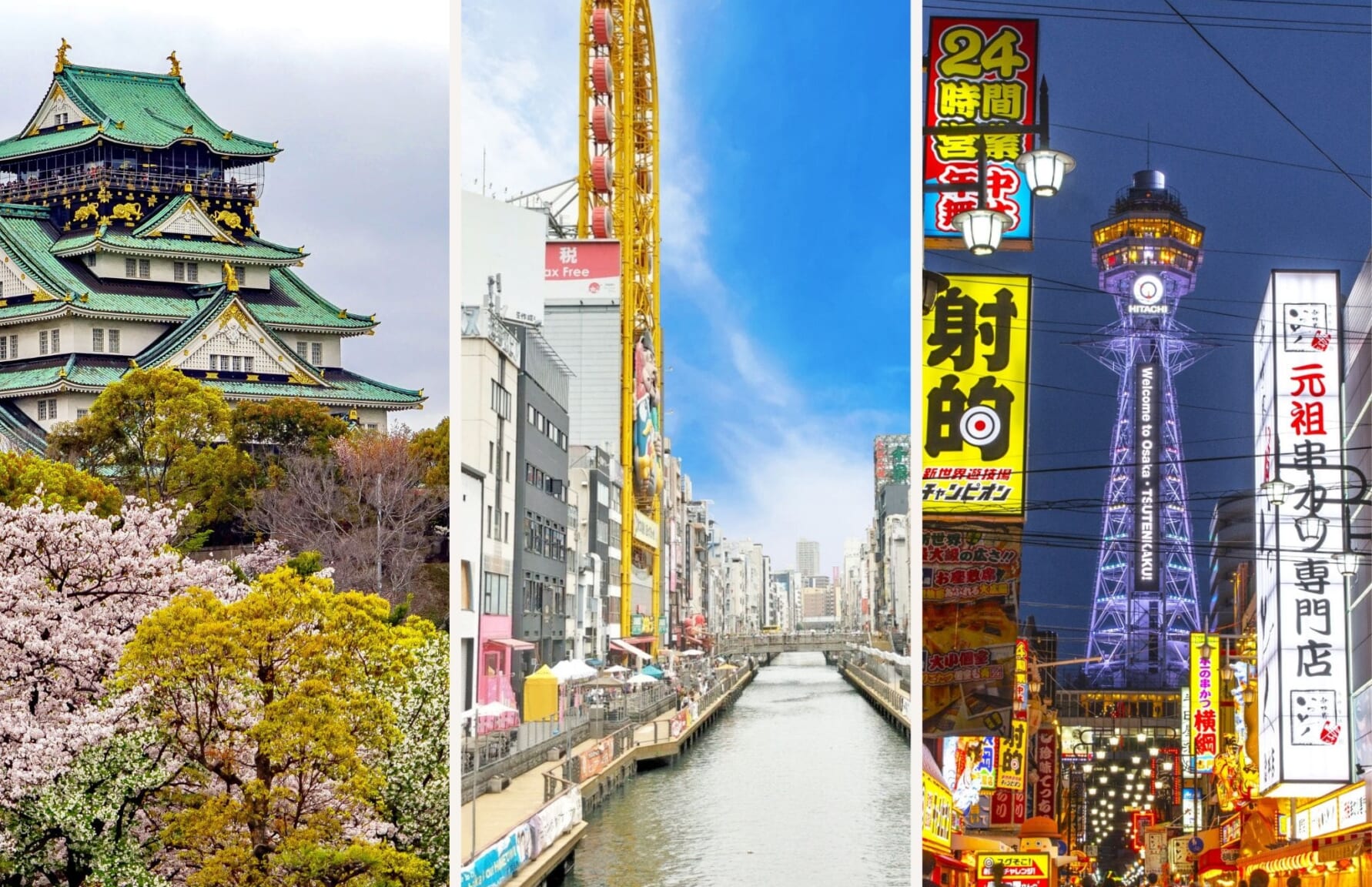 Osaka (大阪) is just a short train ride away from Kyoto. Begin your visit at Osaka Castle (大阪城) and its Nishinomaru Garden, a prime spot for cherry blossom viewing. The castle’s architecture and history provide a nice backdrop to the blooming trees. Inside the castle, you’ll find an interesting museum of history insights into Osaka’s past, and panoramic city views on the upper floor.
Osaka (大阪) is just a short train ride away from Kyoto. Begin your visit at Osaka Castle (大阪城) and its Nishinomaru Garden, a prime spot for cherry blossom viewing. The castle’s architecture and history provide a nice backdrop to the blooming trees. Inside the castle, you’ll find an interesting museum of history insights into Osaka’s past, and panoramic city views on the upper floor.
After the castle, head to Dotonbori (道頓堀), a popular entertainment district known for its extravagant signage, abundant dining options, and bustling atmosphere. Have lunch in one of its many eateries and spend the afternoon leisurely exploring the area, including the nearby Namba (難波) area. As evening falls, make sure to return to the Dotonbori River area to see the neon lights and then head straight to Shinsekai (新世界) for some more night photogenic sights. Don’t skip the local specialties such as takoyaki and okonomiyaki!
Day 11:
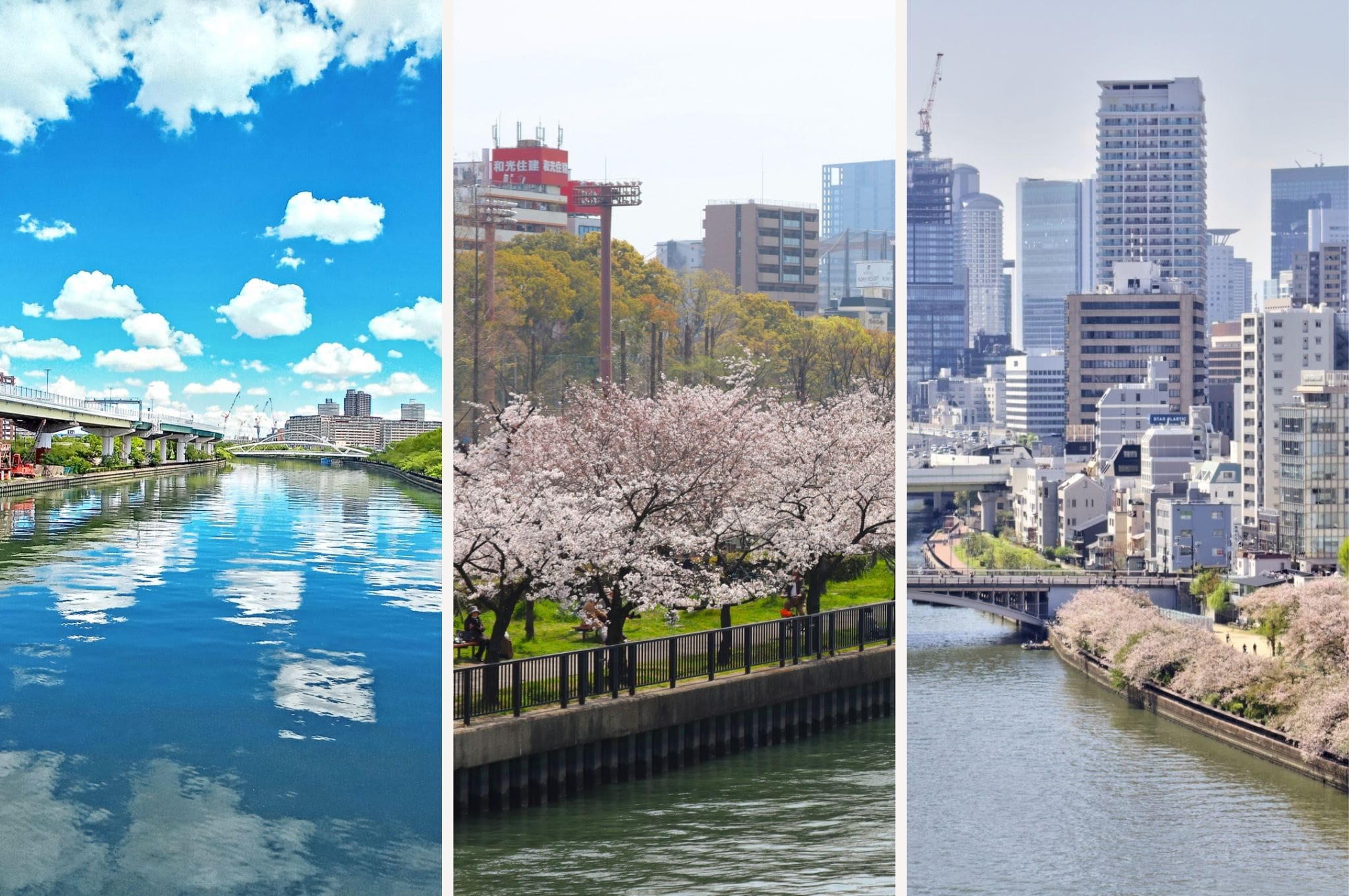 Hopefully, you’re not too hungover from the previous night, so you can continue exploring Osaka’s diverse attractions. Just in case, you’ll take it easy during the morning and take a river cruise along the Okawa River (大川), and relax while taking in the unique views of cherry blossoms from Kema Sakuranomiya Park (毛馬桜之宮公園) and the cityscape from the water.
Hopefully, you’re not too hungover from the previous night, so you can continue exploring Osaka’s diverse attractions. Just in case, you’ll take it easy during the morning and take a river cruise along the Okawa River (大川), and relax while taking in the unique views of cherry blossoms from Kema Sakuranomiya Park (毛馬桜之宮公園) and the cityscape from the water.
Then, spend the afternoon exploring the Umeda area, home to the Umeda Sky Building. Its floating garden observatory offers stunning city views, making it a perfect spot to reflect on your time in Osaka.
▽More ideas of things to do in Osaka▽
▶Best Things to Do in Osaka in Spring
▶Best Places to Visit in Osaka
Day 12: Hiroshima & Miyajima
 Hiroshima Station is about 1 hour and 25 minutes away from Shin-Osaka on Shinkansen. As usual, try to start early to dedicate a day to Hiroshima (広島) and Miyajima (宮島), both rich in history and natural beauty. As soon as you get there, head to Hiroshima Peace Memorial Park (平和記念公園), dedicated to the victims of the atomic bomb in 1945. The park’s monuments and museum, including the Atomic Bomb Dome, offer a poignant reminder of the past and a message of peace.
Hiroshima Station is about 1 hour and 25 minutes away from Shin-Osaka on Shinkansen. As usual, try to start early to dedicate a day to Hiroshima (広島) and Miyajima (宮島), both rich in history and natural beauty. As soon as you get there, head to Hiroshima Peace Memorial Park (平和記念公園), dedicated to the victims of the atomic bomb in 1945. The park’s monuments and museum, including the Atomic Bomb Dome, offer a poignant reminder of the past and a message of peace.
For lunch, take the ferry to Miyajima, famous for Itsukushima Shrine (厳島神社) and its floating torii gate. Explore the traditional shops and restaurants to try local specialties and take the ropeway to enjoy the coastal views framed by cherry blossoms. Then, return to Hiroshima for the evening. Take a stroll around Hiroshima Castle (広島城) to see the pretty night views and then go for dinner. You should probably try Hiroshima-style okonomiyaki!
Days 13-14: Return to Tokyo
Day 13:
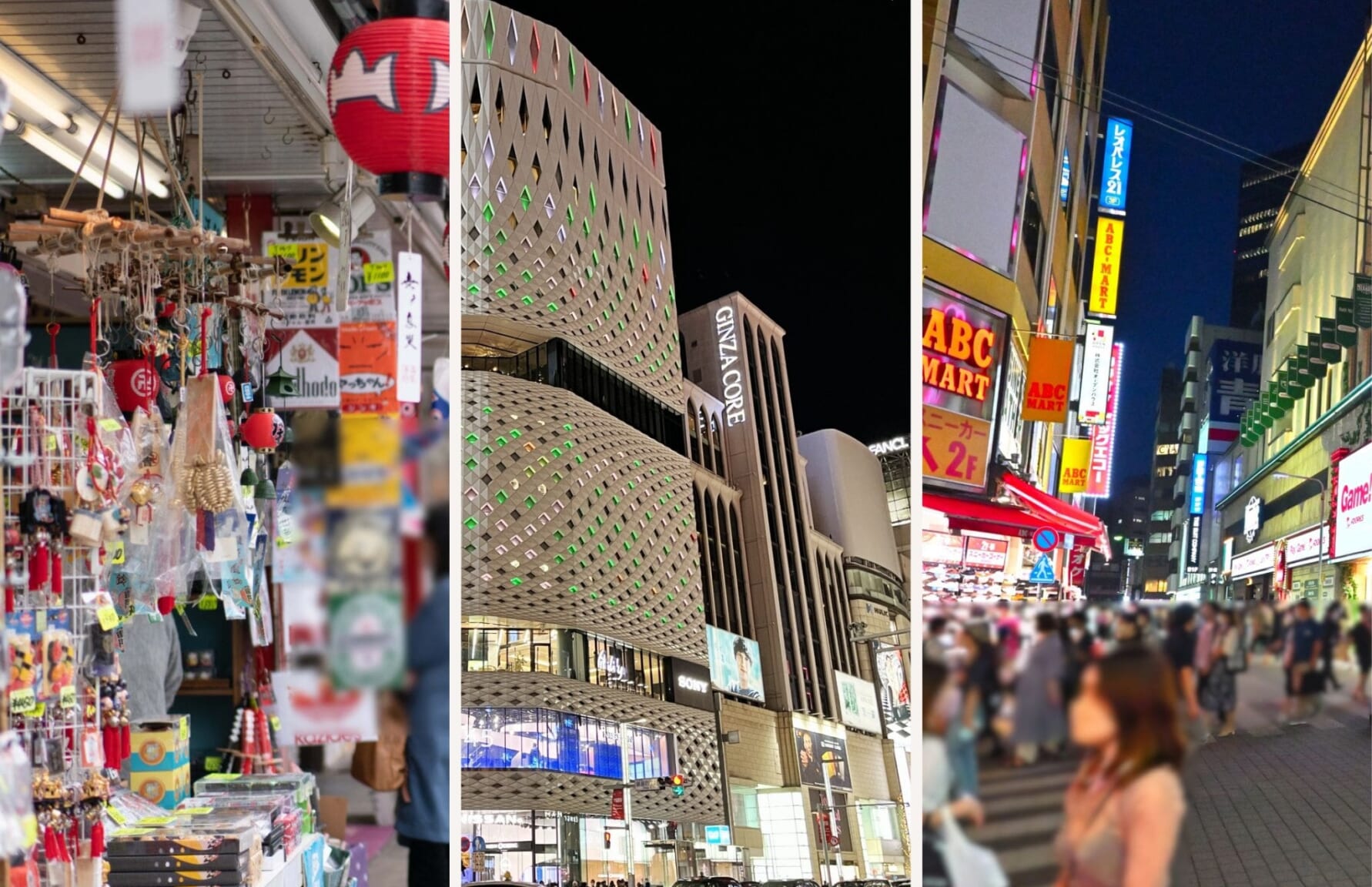 Use this day for travel back to Tokyo, allowing for a leisurely pace and some flexibility in your schedule to rest and relax for a bit. Take into account that the Shinkansen ride from Hiroshima will be around 4 hours. This is a good opportunity to try to visit something you may have missed or do some shopping.
Use this day for travel back to Tokyo, allowing for a leisurely pace and some flexibility in your schedule to rest and relax for a bit. Take into account that the Shinkansen ride from Hiroshima will be around 4 hours. This is a good opportunity to try to visit something you may have missed or do some shopping.
For example, you could spend the afternoon-evening around Ginza (銀座), an area filled with department stores and restaurants. Or perhaps stop by Ikebukuro (池袋) for those more inclined to manga/anime goods.
▽Shopping ideas in Tokyo!▽
▶Most Popular Clothing Stores in Tokyo
▶Best Department Stores in Tokyo
Day 14:
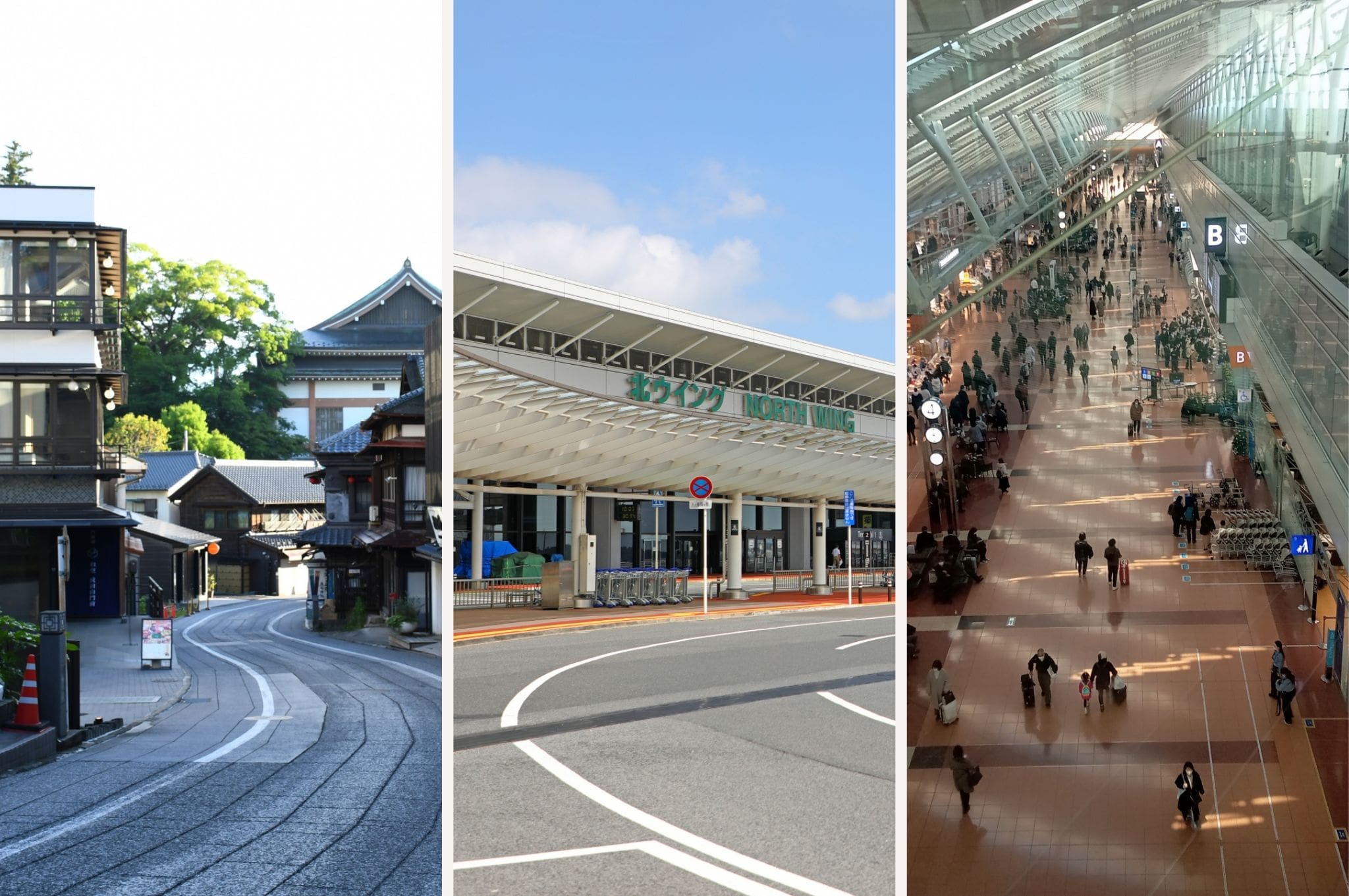 Depending on your departure time, you might have some time to do some last-minute souvenir shopping or visits. Also, if you are departing from Narita Airport, a good last-visit option could be to explore a bit of Narita (成田) as this lovely town is often overlooked by travelers who don’t stop by before or going to Tokyo. Suffice it to say, Narita Airport itself is a pretty good location to get a lot of last-minute shopping done.
Depending on your departure time, you might have some time to do some last-minute souvenir shopping or visits. Also, if you are departing from Narita Airport, a good last-visit option could be to explore a bit of Narita (成田) as this lovely town is often overlooked by travelers who don’t stop by before or going to Tokyo. Suffice it to say, Narita Airport itself is a pretty good location to get a lot of last-minute shopping done.
Same for Haneda Airport. Haneda Airport Garden is a facility recently opened that provides a lot of convenience for leisure and shopping so it’s also a great option to get souvenirs, have another taste of that regional dish you liked so much, or simply relax on your last day before departing.
▽Souvenir ideas!▽
▶Things to buy in Narita Airport or Haneda Airport
▶JAPANESE Souvenir “OMIYAGE” List
I made this 14-day Spring itinerary thinking of making the best of Japan’s Spring season! No need to follow it to the letter but it should give you a good idea of the things you should not miss, particularly during Sakura season to get the experience of a lifetime!
▽Subscribe to our free news magazine!▽
Travelling Japan in spring with a shorter period of time? Here is our 7-day spring itinerary around Tokyo!
For more information about activities and itineraries in Japan, check these articles below, too!
▽Related Articles▽
▼Editor’s Picks▼
Written by
Photographer, journalist, and avid urban cyclist, making sense of Japan since 2017. I was born in Caracas and lived for 14 years in Barcelona before moving to Tokyo. Currently working towards my goal of visiting every prefecture in Japan, I hope to share with readers the everlasting joy of discovery and the neverending urge to keep exploring.





